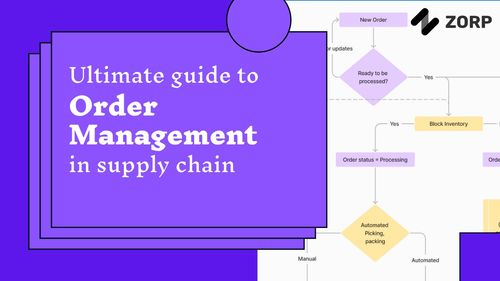The Overlooked Operational Metrics of Business That Top Companies Keep Hidden
Operational metrics are essential for determining a company's performance when it comes to managing a profitable corporation. While revenue and profits are undoubtedly important, there are many other metrics that are equally critical but often overlooked.
Operating a business is not for the faint of heart. There are numerous variables that come into play, such as customer behavior, employee productivity, market trends, and more. To stay competitive and successful, it is essential to keep track of your business’s operational metrics and key performance indicators (KPIs). These metrics offer a snapshot of your business’s performance, helping you make informed decisions that can propel your business to success.
Operational metrics are quantitative measurements that are used to evaluate the performance of a business. These metrics are typically used to track the progress of key business processes and identify areas for improvement. Examples of operational metrics include customer satisfaction, employee productivity, inventory levels, and more.
Tracking operational metrics allows you to gauge your business’s health and identify areas for improvement. It gives you an objective view of your business’s performance, helping you make data-driven decisions. Additionally, tracking operational metrics can help you reduce costs, optimize processes, and ensure that you meet your organizational goals. Without operational metrics, you’re left guessing about your business’s performance, making it difficult to identify areas for improvement.
While the above operational metrics are commonly discussed, there are some lesser-known metrics that businesses can track to gain insights into their operations.
Here are operational metrics that are often overlooked in business, along with their statistical calculations:
This metric measures the percentage of total available capacity that is actually being utilized by the company. It can be calculated as follows:
Capacity Utilization = (Actual Output / Potential Output) x 100
where Actual Output = Units produced in a given period of time, and Potential Output = Maximum units that could have been produced in the same period of time.
This metric measures the time it takes for a product or service to move through the entire process, from initiation to completion. It can be calculated as follows:
Cycle Time = Total Time / Number of Cycles
where Total Time = Sum of all the individual times for each process step, and Number of Cycles = Total number of products or services produced in a given period of time.
This metric measures the percentage of customers who have discontinued using the company's products or services over a given period of time. It can be calculated as follows:
Customer Churn Rate = (Number of customers lost / Total number of customers at the beginning of the period) x 100
Discover the essential steps and strategies for achieving operational excellence in your business. Dive into our latest blog post, "The How-To of Operational Transformation," and pave the way for transformative success.
This metric measures the percentage of employees who have left the company over a given period of time. It can be calculated as follows:
Employee Turnover Rate = (Number of employees who have left / Total number of employees at the beginning of the period) x 100
This metric measures the percentage of leads that have been converted into actual sales. It can be calculated as follows:
Lead Conversion Rate = (Number of leads converted / Total number of leads) x 100
These operational metrics can be extremely valuable in helping businesses optimize their processes and improve their overall performance.
There are many operational metrics that businesses can track, but some are more important than others. Here are some examples of the top operational metrics that businesses should track:
This metric measures the amount of money a business spends to acquire each new customer.
This metric measures the total amount of revenue a business can expect to generate from a single customer over their lifetime.
This metric measures how quickly a business sells its inventory.
This metric measures the number of visitors to a business’s website.
This metric measures the level of engagement a business receives on social media platforms.
-Acquiring a new customer can cost five to twenty-five times more than retaining an existing one - (Harvard Business Review)
-The average customer acquisition cost across industries is $395 - (Hubspot)
-If a page takes longer than three seconds to load, 53% of mobile users will abandon it (link)
-The average inventory turnover for small businesses is 6.59 - (Wasp Barcode)
In conclusion, operational metrics are essential for businesses to evaluate their performance and identify areas for improvement. While revenue and profits are important, there are many other operational metrics that can offer a more comprehensive understanding of a business's health. Some of these metrics, such as capacity utilization, cycle time, customer churn rate, employee turnover rate, and lead conversion rate, are often overlooked but can provide valuable insights into a company's operations. Moreover, tracking top operational metrics can help businesses optimize their processes and improve their overall performance. Therefore, it is essential for businesses to pay attention to operational metrics and key performance indicators to make data-driven decisions that can drive success and competitiveness in the market.

Use the power of Zorp to build powerful applications in a matter of minutes with less much less cost and streamline your operations


